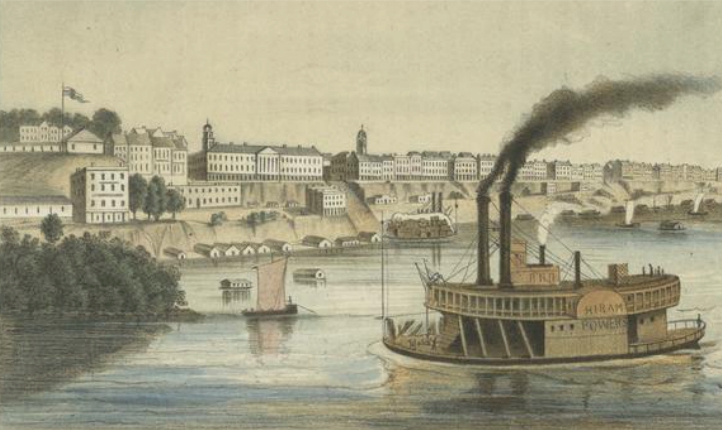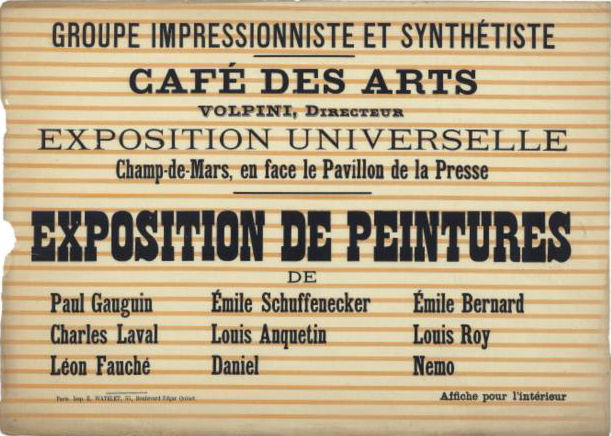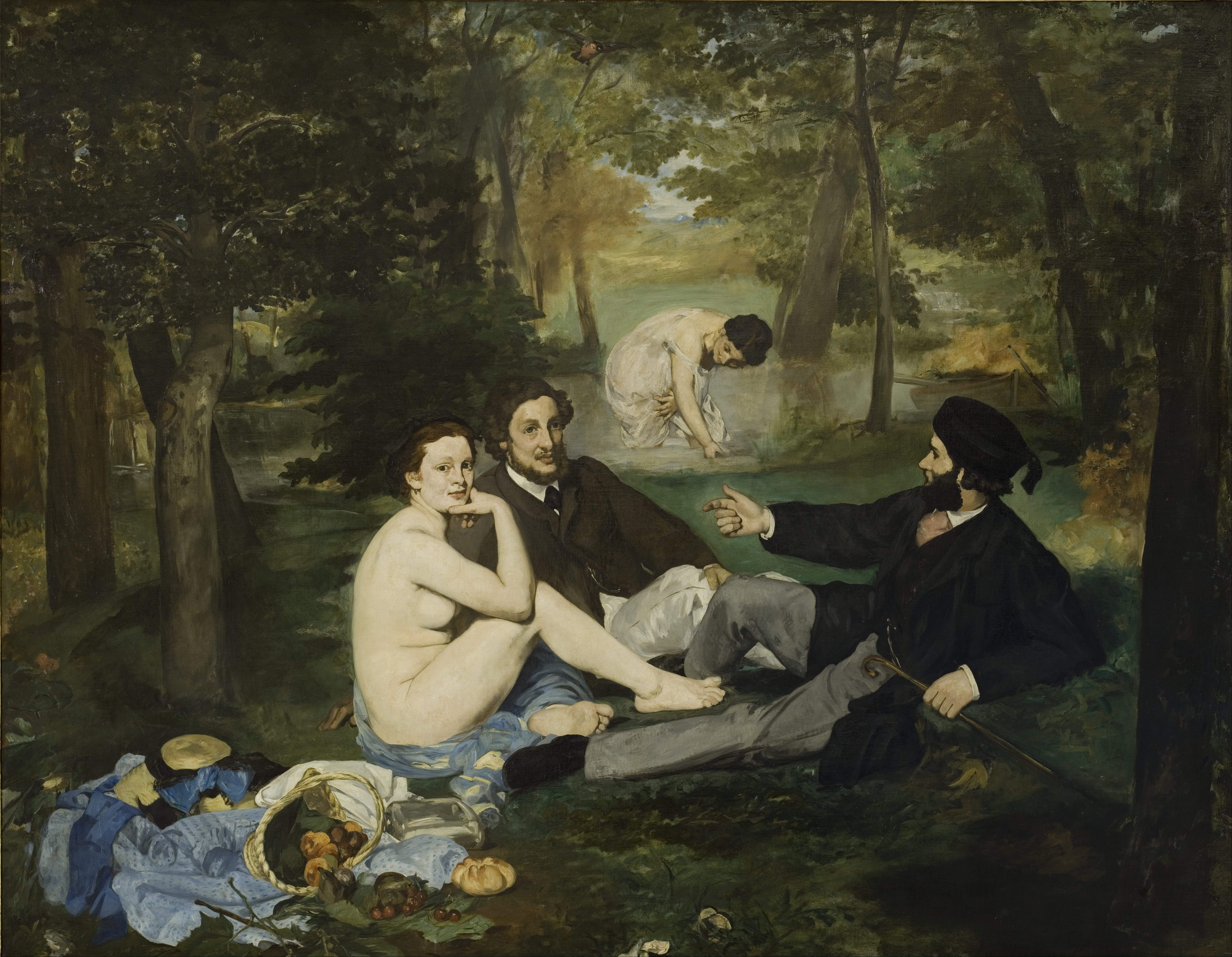|
Dixon Gallery And Gardens
The Dixon Gallery and Gardens is an art museum within 17 acres of gardens, established in 1976, and located at 4339 Park Avenue, Memphis, Tennessee, United States. The museum focuses on French and American impressionism and features works by Monet, Degas, and Renoir, Pierre Bonnard, Mary Cassatt, Marc Chagall, Honoré Daumier, Henri Fantin-Latour, Paul Gauguin, Henri Matisse, Berthe Morisot, Edvard Munch, Auguste Rodin, and Alfred Sisley, as well as an extensive collection of works by French Impressionist artist Jean-Louis Forain. The museum also houses the Stout Collection of 18th-century German porcelain. With nearly 600 pieces of tableware and figures, it is one of the finest such collections in the United States. The Dixon also features a comprehensive schedule of original and traveling exhibitions of fine art and horticulture. The museum sits within four principal outdoor sculpture gardens with Greco-Roman sculpture. Its site was acquired by the Dixons in 1939, and l ... [...More Info...] [...Related Items...] OR: [Wikipedia] [Google] [Baidu] |
Memphis, Tennessee
Memphis is a city in Shelby County, Tennessee, United States, and its county seat. Situated along the Mississippi River, it had a population of 633,104 at the 2020 United States census, 2020 census, making it the List of municipalities in Tennessee, second-most populous city in Tennessee, the fifth-most populous in the Southeastern United States, Southeast, and the List of United States cities by population, 28th-most populous in the nation. Memphis is the largest city proper on the Mississippi River and anchors the Memphis metropolitan area that includes parts of Arkansas and Mississippi, the Metropolitan statistical area, 45th-most populous metropolitan area in the U.S. with 1.34 million residents. European exploration of the area began with Spanish conquistador Hernando de Soto in 1541. Located on the high Chickasaw Bluffs, the site offered natural protection from Mississippi River flooding and became a contested location in the colonial era. Modern Memphis was founded in 181 ... [...More Info...] [...Related Items...] OR: [Wikipedia] [Google] [Baidu] |
Berthe Morisot
Berthe Marie Pauline Morisot (; 14 January 1841 – 2 March 1895) was a French painter, printmaker and a member of the circle of painters in Paris who became known as the Impressionists. In 1864, Morisot exhibited for the first time in the highly esteemed Salon de Paris. Sponsored by the government and judged by Academicians, the Salon was the official, annual exhibition of the in Paris. Her work was selected for exhibition in six subsequent Salons until, in 1874, she joined the ''"rejected"'' Impressionists in the first of their own exhibitions (15 April – 15 May 1874), which included Paul Cézanne, Edgar Degas, Claude Monet, Camille Pissarro, Pierre-Auguste Renoir and Alfred Sisley. It was held at the studio of the photographer Nadar. Morisot went on to participate in all but one of the following eight impressionist exhibitions, between 1874 and 1886. Morisot was married to Eugène Manet, the brother of her friend and colleague Édouard Manet. She was described by a ... [...More Info...] [...Related Items...] OR: [Wikipedia] [Google] [Baidu] |
Jean-Louis Forain
Jean-Louis Forain (; 23 October 1852 – 11 July 1931) was a French Impressionist painter and printmaker, working in media including oils, watercolour, pastel, etching and lithograph. Compared to many of his Impressionist colleagues, he was more successful during his lifetime, but his reputation is now much less exalted. Life and work Forain was born in Reims, Marne but at age eight, his family moved to Paris. He began his career working as a caricaturist for several Paris journals including ''Le Monde Parisien'' and ''Le rire satirique''. Wanting to expand his horizons, he enrolled at the École des Beaux Arts, studying under Jean-Léon Gérôme as well as another sculptor/painter, Jean-Baptiste Carpeaux. Forain's quick and often biting wit allowed him to befriend poets Arthur Rimbaud and Paul Verlaine as well as many writers, most notably Joris-Karl Huysmans. He was one of only "seven known recipients" to receive a first edition of ''A Season in Hell'' directly from Rimba ... [...More Info...] [...Related Items...] OR: [Wikipedia] [Google] [Baidu] |
Camille Pissarro
Jacob Abraham Camille Pissarro ( ; ; 10 July 1830 – 13 November 1903) was a Danish-French Impressionist and Neo-Impressionist painter born on the island of St Thomas (now in the US Virgin Islands, but then in the Danish West Indies). His importance resides in his contributions to both Impressionism and Post-Impressionism. Pissarro studied from great forerunners, including Gustave Courbet and Jean-Baptiste-Camille Corot. He later studied and worked alongside Georges Seurat and Paul Signac when he took on the Neo-Impressionist style at the age of 54. In 1873 he helped establish a collective society of fifteen aspiring artists, becoming the "pivotal" figure in holding the group together and encouraging the other members. Art historian John Rewald called Pissarro the "dean of the Impressionist painters", not only because he was the oldest of the group, but also "by virtue of his wisdom and his balanced, kind, and warmhearted personality". Paul Cézanne said "he was a fa ... [...More Info...] [...Related Items...] OR: [Wikipedia] [Google] [Baidu] |
Realism (visual Arts)
Realism in the arts is generally the attempt to represent subject-matter truthfully, without artificiality, exaggeration, or speculative or supernatural elements. The term is often used interchangeably with naturalism, although these terms are not necessarily synonymous. Naturalism, as an idea relating to visual representation in Western art, seeks to depict objects with the least possible amount of distortion and is tied to the development of linear perspective and illusionism in Renaissance Europe. Realism, while predicated upon naturalistic representation and a departure from the idealization of earlier academic art, often refers to a specific art historical movement that originated in France in the aftermath of the French Revolution of 1848. With artists like Gustave Courbet capitalizing on the mundane, ugly or sordid, realism was motivated by the renewed interest in the commoner and the rise of leftist politics. The realist painters rejected Romanticism, which had c ... [...More Info...] [...Related Items...] OR: [Wikipedia] [Google] [Baidu] |
John Rewald
John Rewald (May 12, 1912 – February 2, 1994) was an American academic, author and art historian. He was known as a scholar of Impressionism, Post-Impressionism, Cézanne, Renoir, Pissarro, Seurat, and other French painters of the late 19th century. He was recognized as a foremost authority on late 19th-century art. His ''History of Impressionism'' is a standard work. Biography He was born Gustav Rewald at Berlin, of a middle-class, professional family. Rewald came from a Jewish background. He completed his ''Abitur'' in Hamburg, and studied thereafter at several German universities, going to the University of Paris, Sorbonne in Paris in 1932. At the Sorbonne he wrote his dissertation on the friendship of Émile Zola, Zola and Cézanne, having to persuade the academic authorities on this because Cézanne (died 1906) was considered too recent a figure. When France declared war on Germany in 1939, he was interned as an enemy alien. He emigrated to the United States in 1941 a ... [...More Info...] [...Related Items...] OR: [Wikipedia] [Google] [Baidu] |
Post-Impressionists
Post-Impressionism (also spelled Postimpressionism) was a predominantly French art movement that developed roughly between 1886 and 1905, from the last Impressionist exhibition to the birth of Fauvism. Post-Impressionism emerged as a reaction against Impressionists' concern for the naturalistic depiction of light and colour. Its broad emphasis on abstract qualities or symbolic content means Post-Impressionism encompasses Les Nabis, Neo-Impressionism, Symbolism, Cloisonnism, the Pont-Aven School, and Synthetism, along with some later Impressionists' work. The movement's principal artists were Paul Cézanne (known as the father of Post-Impressionism), Paul Gauguin, Vincent van Gogh and Georges Seurat. The term Post-Impressionism was first used by art critic Roger Fry in 1906.Peter Morrin, Judith Zilczer, William C. Agee, ''The Advent of Modernism. Post-Impressionism and North American Art, 1900-1918'', High Museum of Art, 1986 Critic Frank Rutter in a review of the Salon d'Automne ... [...More Info...] [...Related Items...] OR: [Wikipedia] [Google] [Baidu] |
Impressionists
Impressionism was a 19th-century art movement characterized by visible brush strokes, open composition, emphasis on accurate depiction of light in its changing qualities (often accentuating the effects of the passage of time), ordinary subject matter, unusual visual angles, and inclusion of movement as a crucial element of human perception and experience. Impressionism originated with a group of Paris-based artists whose independent exhibitions brought them to prominence during the 1870s and 1880s. The Impressionists faced harsh opposition from the conventional art community in France. The name of the style derives from the title of a Claude Monet work, ''Impression, soleil levant'' ('' Impression, Sunrise''), which provoked the critic Louis Leroy to coin the term in a satirical 1874 review of the First Impressionist Exhibition published in the Parisian newspaper '' Le Charivari''. The development of Impressionism in the visual arts was soon followed by analogous styles in ... [...More Info...] [...Related Items...] OR: [Wikipedia] [Google] [Baidu] |
English Garden
The English landscape garden, also called English landscape park or simply the English garden (, , , , ), is a style of "landscape" garden which emerged in England in the early 18th century, and spread across Europe, replacing the more formal, symmetrical French formal garden which had emerged in the 17th century as the principal gardening style of Europe. The English garden presented an idealized view of nature. Created and pioneered by William Kent and others, the "informal" garden style originated as a revolt against the architectural garden and drew inspiration from landscape paintings by Salvator Rosa, Claude Lorrain, and Nicolas Poussin, as well as from the classic Chinese gardens of the East, which had recently been described by European travellers and were realized in the Anglo-Chinese garden.Bris, Michel Le. 1981. ''Romantics and Romanticism.'' Skira/Rizzoli International Publications, Inc. New York 1981. 215 pp. age 17Tomam, Rolf, editor. 2000. ''Neoclassicism and ... [...More Info...] [...Related Items...] OR: [Wikipedia] [Google] [Baidu] |
Greco-Roman
The Greco-Roman world , also Greco-Roman civilization, Greco-Roman culture or Greco-Latin culture (spelled Græco-Roman or Graeco-Roman in British English), as understood by modern scholars and writers, includes the geographical regions and countries that culturally—and so historically—were directly and intimately influenced by the language, culture, government and religion of the Greeks and Romans. A better-known term is classical antiquity. In exact terms the area refers to the "Mediterranean world", the extensive tracts of land centered on the Mediterranean and Black Sea basins, the "swimming pool and spa" of the Greeks and the Romans, in which those peoples' cultural perceptions, ideas, and sensitivities became dominant in classical antiquity. That process was aided by the universal adoption of Greek as the language of intellectual culture and commerce in the Eastern Mediterranean and of Latin as the language of public administration and of forensic advocacy, especi ... [...More Info...] [...Related Items...] OR: [Wikipedia] [Google] [Baidu] |
Sculpture Garden
A sculpture garden or sculpture park is an outdoor garden or park which includes the presentation of sculpture, usually several permanently sited works in durable materials in landscaped surroundings. A sculpture garden may be private, owned by a museum and accessible freely or for a fee, or public and accessible to all. Some cities own large numbers of public sculptures, some of which they may present together in city parks. Exhibits range from individual, traditional sculptures to large site-specific installations. Sculpture gardens may also vary greatly in size and scope, either featuring the collected works of multiple artists, or the artwork of a single individual. These installations are related to several similar concepts, most notably land art, where landscapes become the basis of a site-specific sculpture, and topiary gardens, which consists of clipping or training live plants into living sculptures. A sculpture trail layout may be adopted, either in a park or thr ... [...More Info...] [...Related Items...] OR: [Wikipedia] [Google] [Baidu] |
Porcelain
Porcelain (), also called china, is a ceramic material made by heating Industrial mineral, raw materials, generally including kaolinite, in a kiln to temperatures between . The greater strength and translucence of porcelain, relative to other types of pottery, arise mainly from Vitrification#Ceramics, vitrification and the formation of the mineral mullite within the body at these high temperatures. End applications include tableware, ceramic art, decorative ware such as figurines, and products in technology and industry such as Insulator (electricity), electrical insulators and laboratory ware. The manufacturing process used for porcelain is similar to that used for earthenware and stoneware, the two other main types of pottery, although it can be more challenging to produce. It has usually been regarded as the most prestigious type of pottery due to its delicacy, strength, and high degree of whiteness. It is frequently both glazed and decorated. Though definitions vary, po ... [...More Info...] [...Related Items...] OR: [Wikipedia] [Google] [Baidu] |










